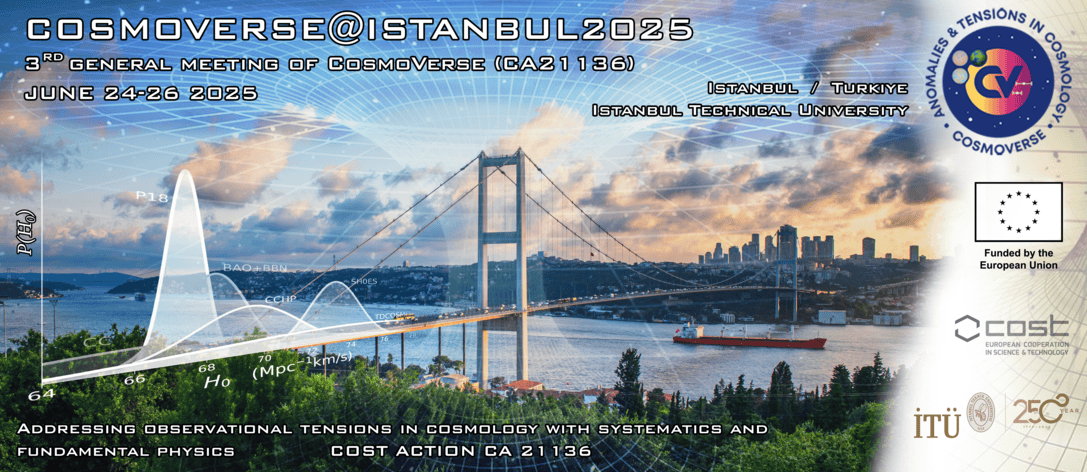Speaker
Description
We formulate topological holographic dark energy and we present how it can alleviate both $H_{0}$ and $\sigma 8$ tensions. The modified cosmological model is obtained by the application of the gravity thermodynamics conjecture when the corresponding Wald Gauss Bonnet entropy term is added to the standard Bekenstein Hawking one. Thus, one obtains modified Friedmann equations that depend on the rate of horizon topology change, which is directly linked to the formation and merging rate of black holes by the conservation of the second thermodynamical law. By employing the star formation rate per redshift from observations as a first approximation to the BH formation and merging rate, we obtain a phantom effective dark energy which is known to be a sufficient mechanism that can lead to the $H_{0}$ tension alleviation. Indeed, we show that for particular regions of the parameter space the scenario at hand does lead to higher $H_{0}$ values, and we verify this result performing a confrontation with observational data from Supernovae Type Ia (SNIa) and Cosmic Chronometers (CC) measurements. Additionally, analyzing the growth of structures and the evolution of the matter overdensity we show that the redshift behavior of the $f\sigma_{8}$ observable obtains smaller values than the ones arising in $\Lambda$CDM cosmology, and thus the scenario at hand can alleviate the $\sigma_{8}$ tension too. This is an advantage of Wald-Gauss-Bonnet cosmology, since the simultaneous alleviation of both tensions cannot be easily achieved within other entropic scenarios.

